Your Cart is Empty
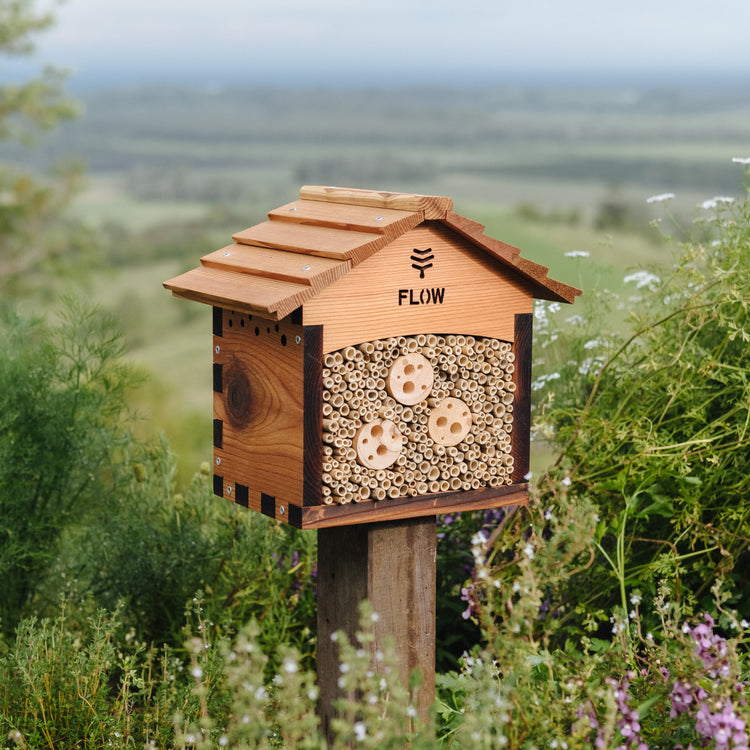
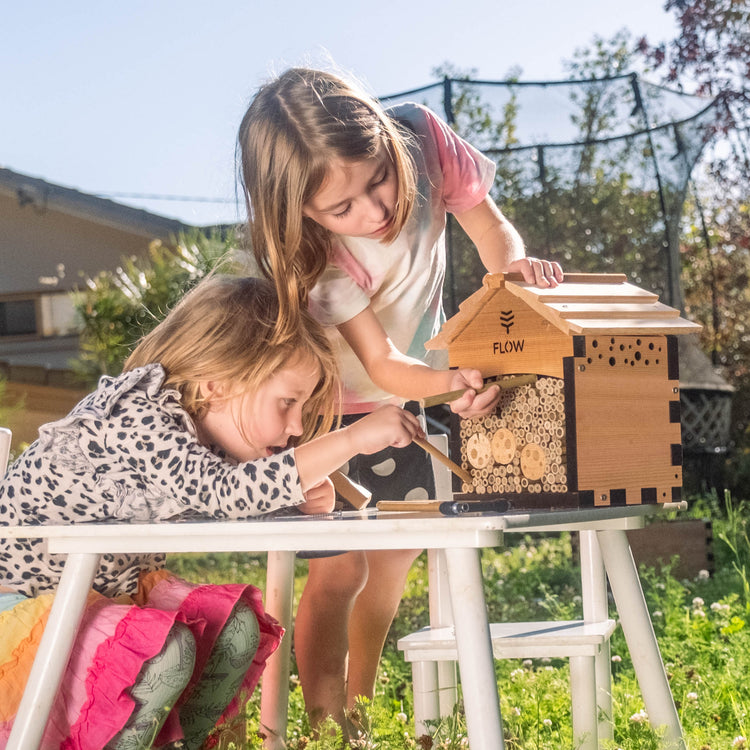
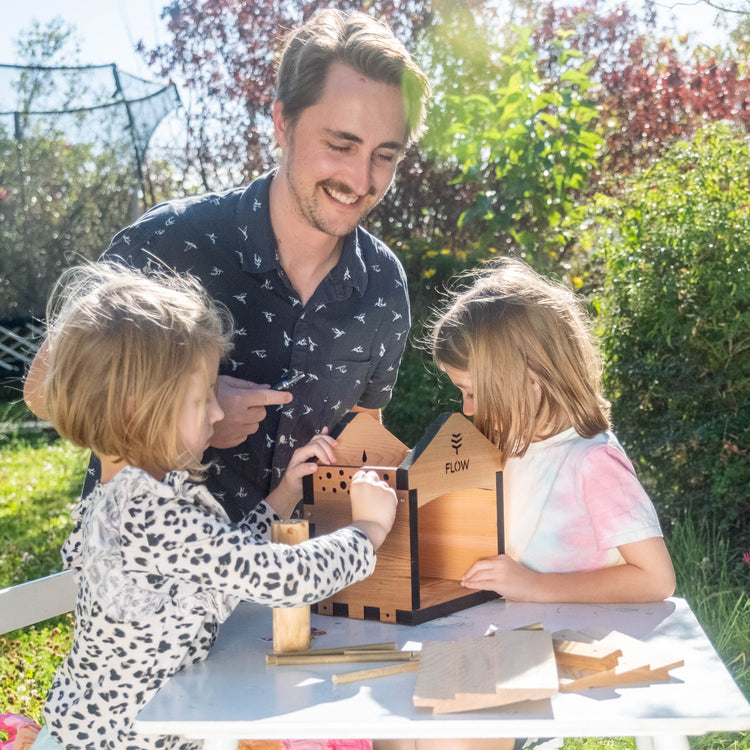
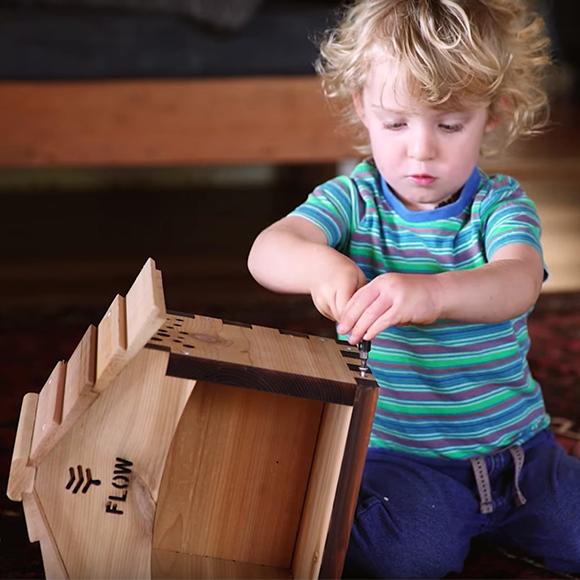
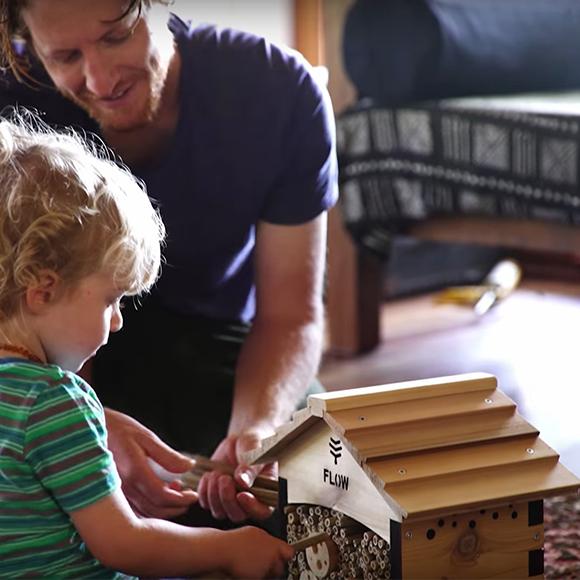
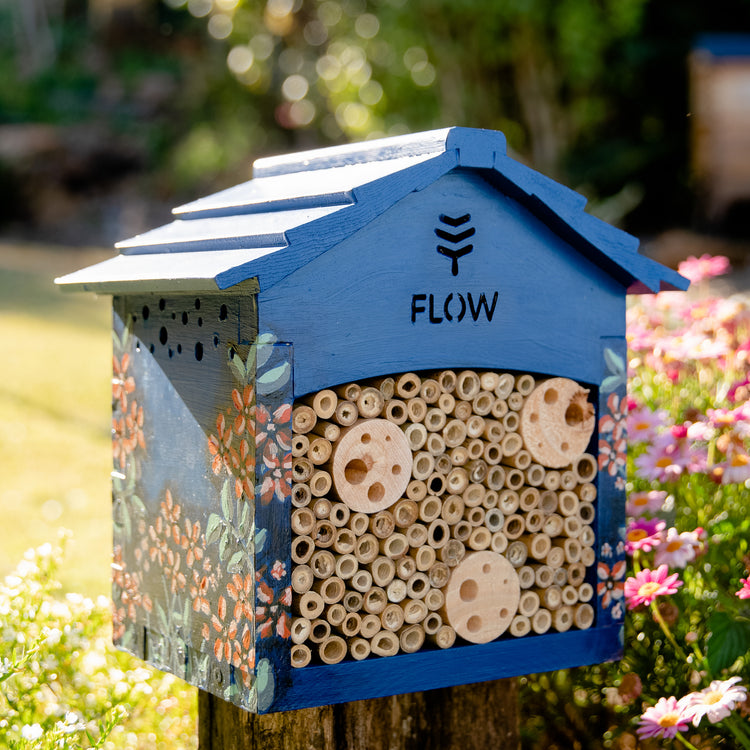
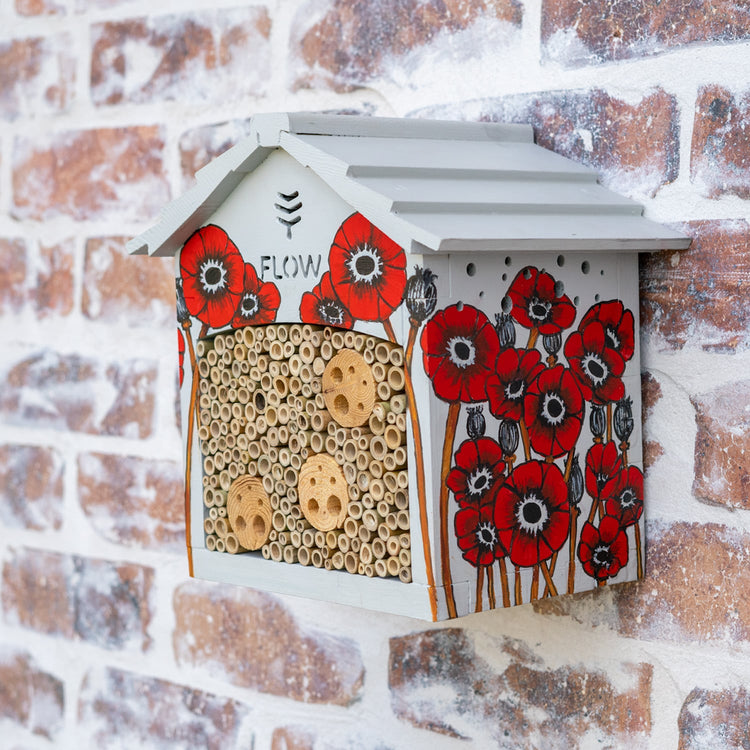
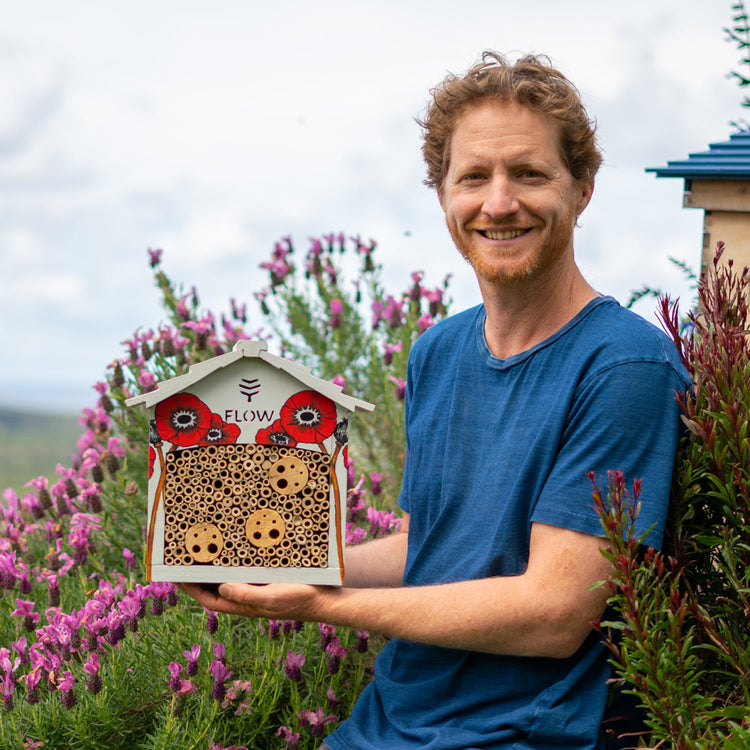
A cosy home for native solitary nesting bees
The Flow Pollinator House is designed to house native solitary nesting bees and to help create pollinator corridors between our wild spaces for habitats affected by land clearing and urbanisation.
At Flow, we try to minimise waste wherever possible – these beautiful western red cedar Pollinator Houses have been created using salvaged Flow Hive 2+ timber offcuts and sustainably sourced bamboo. Each house is unique – you may even find a Flow Hive handle or brand on yours. By reducing waste, we lessen our impact on the environment, which is also good news for pollinators.
The perfect gift for garden enthusiasts or passionate pollinator protectors.
- Pollinator house (flat packed)
- Assembly tool
- Bamboo inserts
- Wooden rods with drilled holes
- Eco ceramic coated screws
- Shipped flat-packed for easy assembly.
- Roof requires painting to protect against the weather.
- Does not include bees.
- Does not include our patented Flow Frame technology.
- This hive (bee hotel) is exclusively for the habitat of native solitary nesting bees, not for harvesting honey.
All images are for illustrative purposes – actual product may vary slightly.
The Flow Pollinator House is made from salvaged timber hive panels which means each house will be unique.
Manufactured in upcycled western red cedar – once assembled, apply two coats of good quality outdoor paint to the roof to provide longevity against the elements.
Your Flow Pollinator House will require maintenance to ensure that it is safe and habitable for solitary nesting visitors. Maintenance required will be dependent on local conditions.
Bamboo inserts need to be monitored for pests and to reduce the risk of spreading diseases. It's good practice to replace these tubes every second year to limit the buildup of pathogens and fungus. Read more here.
Solitary bees are generally harmless and non-aggressive. Some insects do sting, so it’s best to exercise caution when handling your pollinator house.
Dispatch times below:
Flow Pollinator House: Dispatches in 1-2 working daysA Flow Pollinator House is a great introduction to the fascinating world of bees and pollinators. Together through planting flowers and building flourishing gardens, they’ll learn the importance of supporting our tiny environmental champions by increasing pollinator habitat around their neighbourhood.
This cosy home is designed to raise awareness about the importance of protecting these incredible creatures, who are essential to life on earth.
The best news is, 100% of profits from this product are donated to support pollinator advocacy, protection and education.
- Shipped flat-packed for easy assembly.
- Roof requires painting to protect against the weather.
- Your bamboo inserts come in myriad shapes and sizes. Have some fun assembling them in your own unique way!
- Does not include bees.
- Does not include our patented Flow Frame technology.
- This hive (bee hotel) is exclusively for the habitat of native solitary nesting bees, not for harvesting honey.



